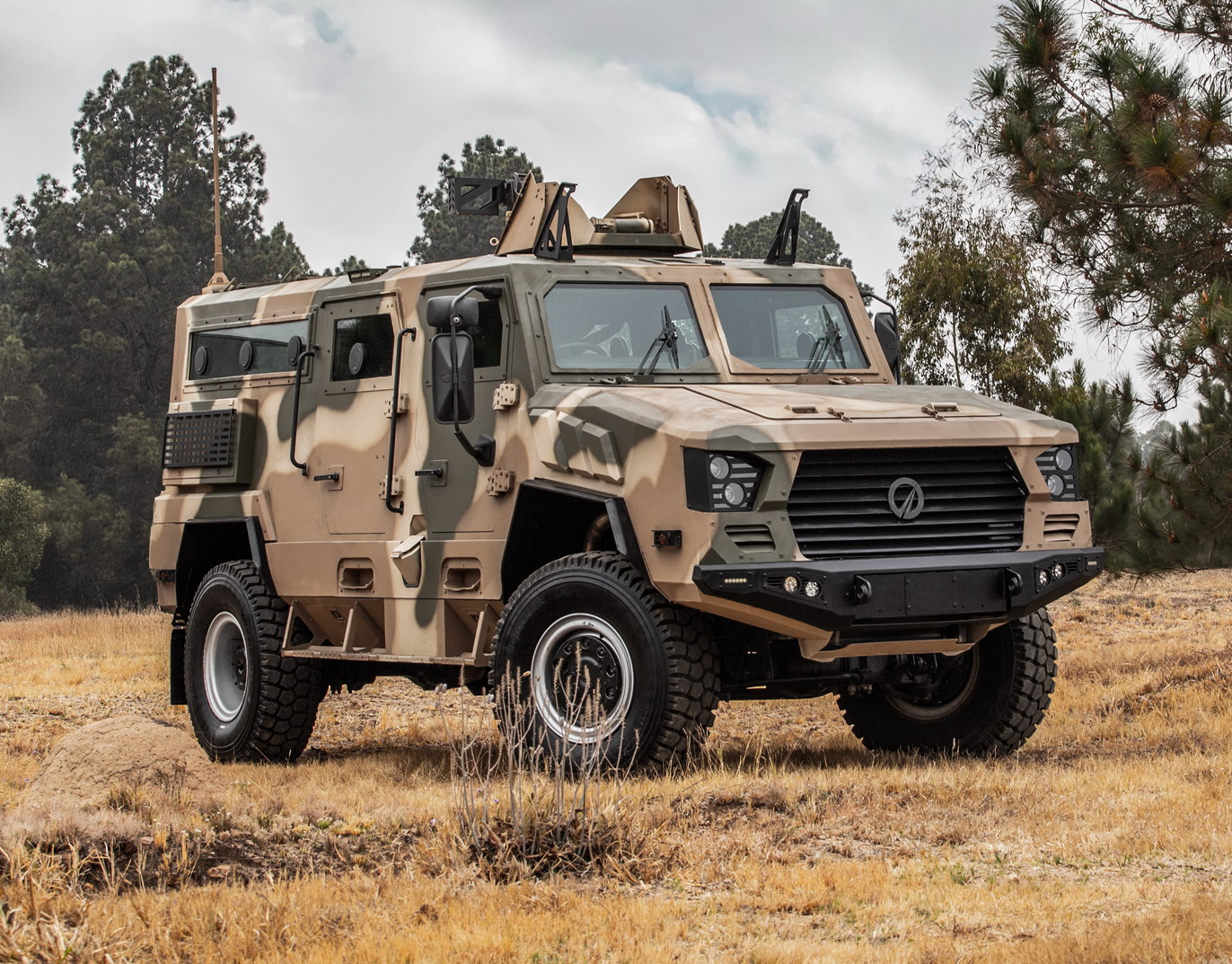

Armscor has identified a preferred bidder for the South African National Defence Force’s (SANDF) new border patrol Personnel Carrier. Although the name cannot yet be released, this marks a potentially positive step for the SA Army, which has long awaited modern equipment.
A Painful Wake-Up Call
Recent years have exposed the SANDF’s deteriorating combat readiness. During clashes in January 2025 in the Democratic Republic of Congo (DRC), several South African soldiers were killed, reigniting debate over whether our troops are being sent into battle without proper protection or modern vehicles. Parliament and the media questioned the SANDF’s preparedness, pointing to vehicles over 40 years old – relics unsuited to today’s missions where mobility, protection, and situational awareness are vital.
Despite calls from the President, Defence Minister, and Parliament to raise the defence budget to 1.5 percent of GDP, South Africa continues to underinvest in the tools that safeguard its soldiers and its sovereignty.
Why New Vehicles Are Urgent
South Africa’s borders remain porous, threatened by smuggling, trafficking, and cross-border crime. The SANDF currently relies on ageing Toyota Land Cruisers and armoured vehicles from the 1970s and 1980s – platforms long past their service lives. Armscor’s tender issued in July 2024 aims to supply new multipurpose vehicles for border patrol and external peacekeeping.
However, since the tender predates the DRC crisis, questions arise over whether the Army’s current specifications remain adequate. Once bids are in, specifications cannot be changed without cancelling the process, leaving little flexibility to adjust to lessons learned in combat.
Potential Contenders
The local armoured-vehicle market is highly competitive. Paramount Group’s Africa proven Maatla is offered in a Long Wheelbase that was developed for border security and meets Armscor’s technical standards as an off-the-shelf unit. DCD Protected Mobility’s Springbuck range has been tested in African conditions, and a command variant already aligns with the tender’s requirements.
Newer entrants such as Milkor 4×4 and SVI Max 9 could also meet specifications with modification. Denel might offer the RG21, a close fit for the requirement, but its troubled history with the Badger project raises doubts. Encouragingly, Defence Minister Angie Motshekga has stated that the Ministry will not interfere in Denel’s commercial operations, suggesting that Armscor will make its decision independently.
Lessons from Past Procurement Failures
The border patrol tender is more than routine procurement. It is a test of whether South Africa can run a transparent, technically sound, and accountable defence acquisition. Local production and industrial capability must be prioritised, yet past projects offer sobering lessons.
The Badger Infantry Fighting Vehicle programme, launched to modernise the Army and strengthen Denel, became a R7.7 billion debacle. Eighteen years later, not one operational vehicle has been delivered. Similarly, a project to replace the SAMIL support fleet collapsed after legal challenges, leaving the Army with outdated trucks. The current tender must avoid repeating these mistakes.
Risks in the Current Tender
Structural weaknesses that doomed earlier projects could resurface. The tender is designed as a “winner-takes-all” competition. Potential irregularities risks controversy if the contract goes to a bidder that can be contended as lacking experience or production capacity. Losing bidders could then challenge the outcome, stalling deliveries. This is a scenario that serves neither the Army nor the defence industry.
Compounding concerns, no pre-selection testing of vehicles occurred despite plans to trial three local options. While all proposed trial vehicles are South African designs, failure to test them before selection invites uncertainty about suitability and reliability. Awarding the contract to a foreign design would be a severe setback for local industry.
Towards a Better Solution
The SANDF urgently needs a credible, modern vehicle fleet to restore operational credibility. That begins with a transparent, fair, and pragmatic procurement process. The defence industry remains one of the nation’s technological strengths, capable of high-value job creation and export growth.
Export success depends on domestic adoption of “procure to export.” A contentious, single-supplier award could paralyse progress. Armscor’s procedures, however, do permit multi-supplier awards, which could both support local industry and ensure timely delivery.
Two practical approaches exist:
- Variant-based allocation: Different suppliers could build the Section, Command, and Ambulance variants, allowing specialisation while spreading industrial participation.
- Shared production: Multiple qualified OEMs could each produce all variants to meet company or battalion level needs, strengthening capacity across firms and speeding up deliveries. A 10-year performance-based maintenance contract, already part of the request for proposals, could guarantee vehicle availability regardless of the number of vehicle types.
This approach would also mitigate risk. Even if one manufacturer falters, others would continue production. A side benefit is that at least 50% more sub-contractors/suppliers would be brought into the supply chain. This is needed in light of job creation.
A Test of Will and Competence
The DRC deployment proved that soldiers’ lives depend on equipment availability. The Badger saga showed what happens when procurement is mishandled. The new Personnel Carrier tender is an opportunity to show that South Africa has learned from both experiences.
Choosing the right vehicles, and the right procurement strategy, could revitalise the local defence industry, restore confidence in Armscor, and ensure that soldiers never again enter combat in obsolete equipment.
Another compromised tender would deepen the SANDF’s crisis. A transparent, well-executed one could help rebuild a vital pillar of national security, the SA defence industry.
Written by James Kerr, Orion Consulting CC, which provides Market Entry Strategy and Bid & Proposal services to the Aerospace & Defence related industry and assists international SME mission system product suppliers to gain traction in South Africa.
Update: In a statement issued on 22 October, Armscor said public confidence in the defence acquisition process was being eroded by “irresponsible and unconfirmed statements in the media” and referred to this article as well as a story published on 22 October by The Citizen entitled “SANDF armoured vehicle tender raises red flags.”
The articles “are evidence of how politics and vested interest aims to undermine technical merit, transparency and national security while attempting to cast a shadow over the requirement of the SANDF and the process followed by Armscor in satisfying the requirement of the SANDF in accordance with the user requirement specification,” Armscor stated.
At its request, DefenceWeb apologises to Armscor for not being afforded reasonable opportunity to respond to allegations by armoured vehicle manufacturers and James Kerr.
.



